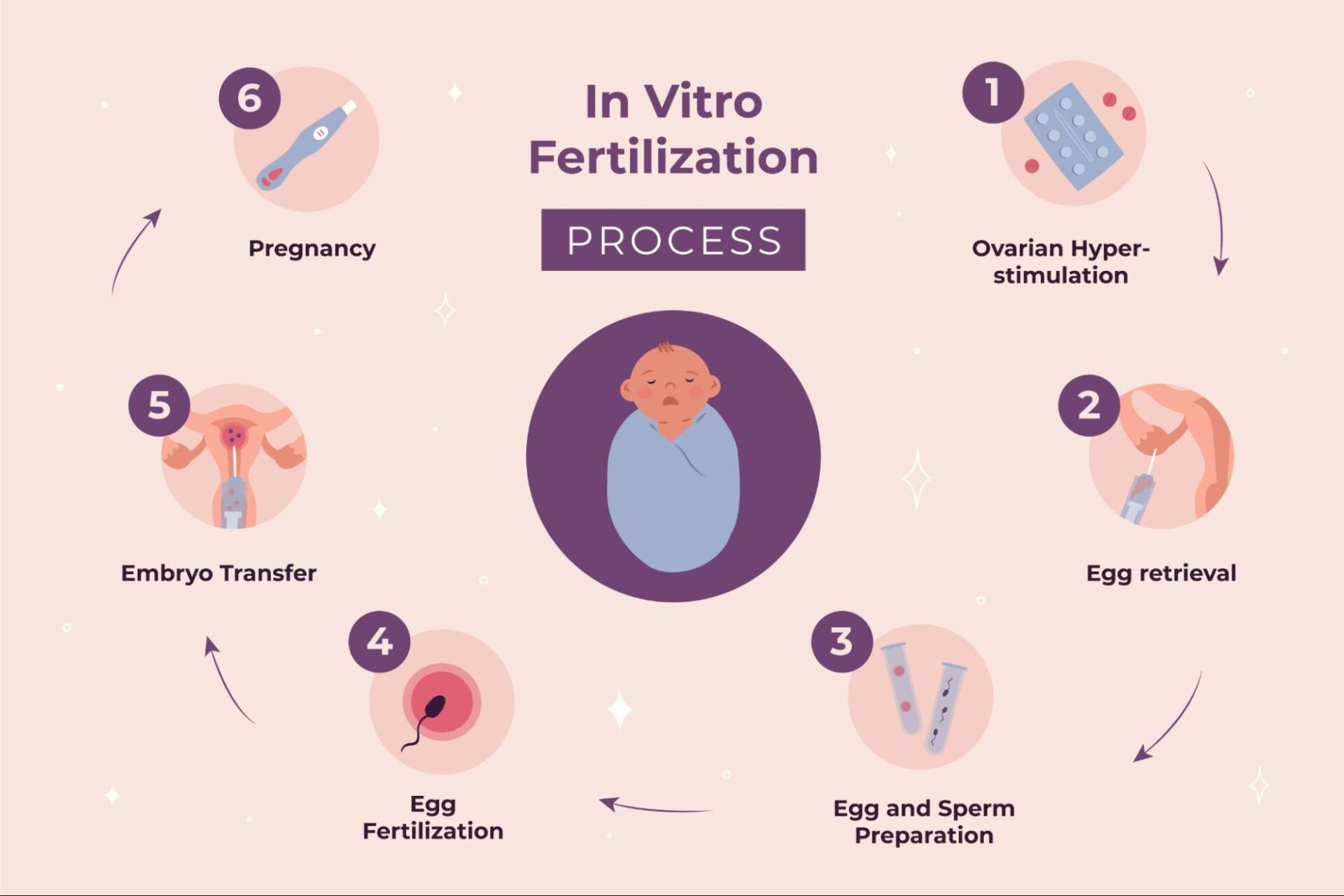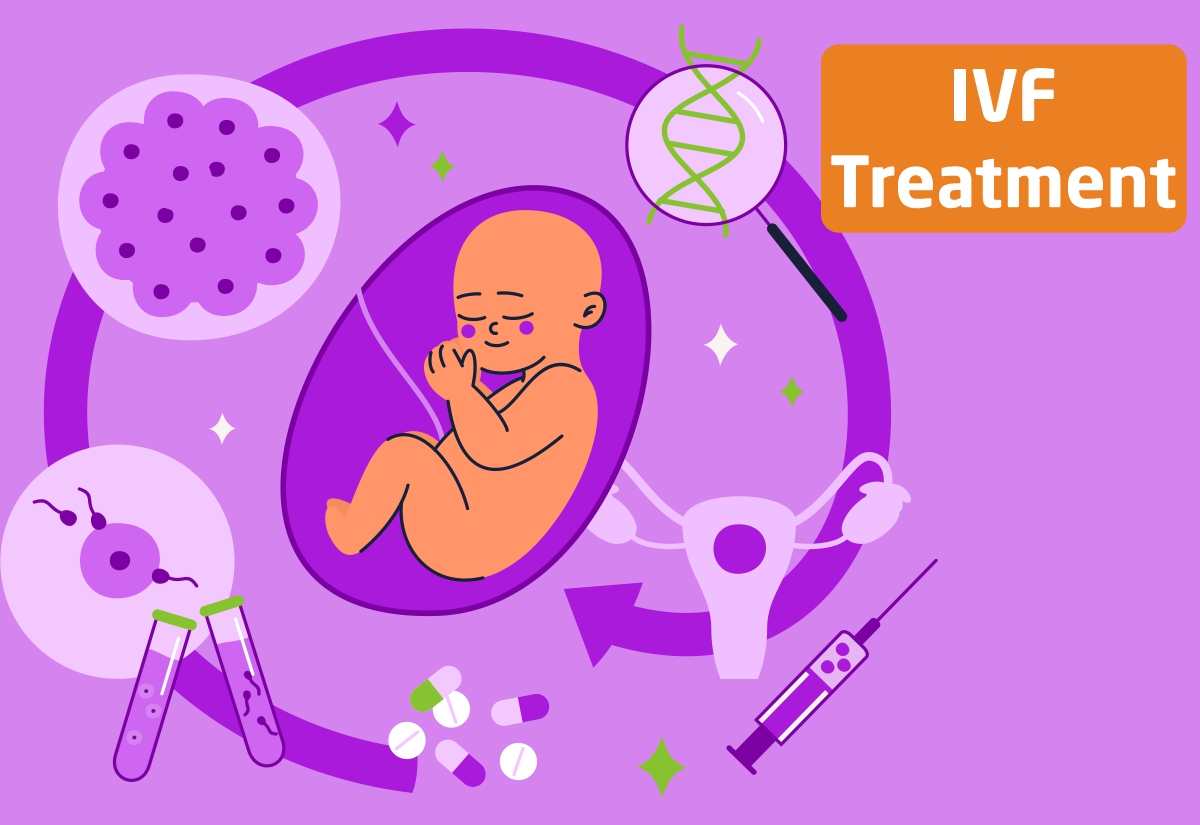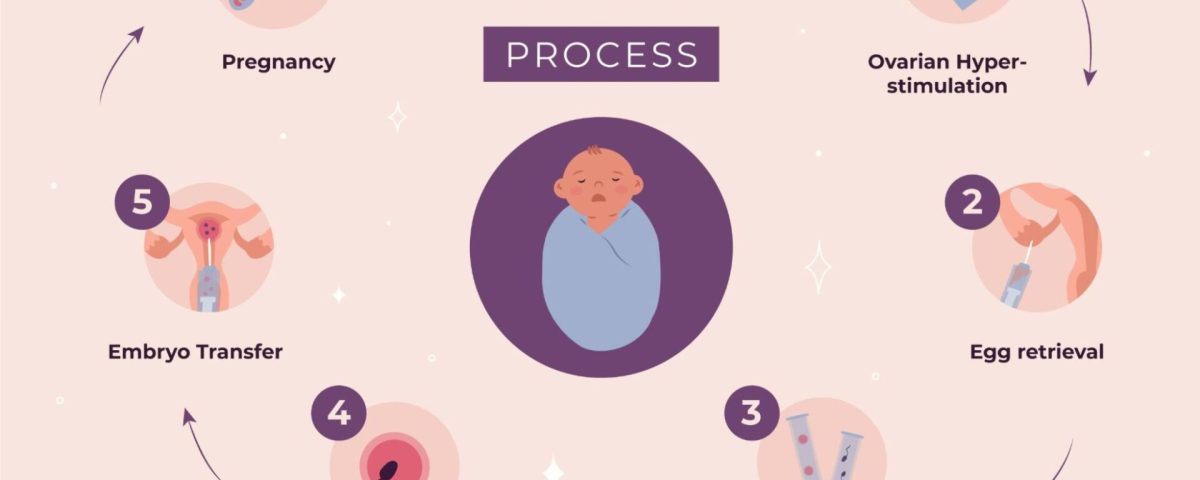Your Guide to Weill Cornell IVF at the Hamptons Location: Everything You Need to Know
April 25, 2025Reasons for a Woman to Use IVF: Your Complete Guide to This Life-Changing Journey
In vitro fertilization (IVF) might sound like something out of a sci-fi movie—eggs and sperm meeting in a lab dish instead of inside the body—but for millions of women, it’s a real, everyday path to building a family. Whether you’re just curious or seriously considering it, you’re in the right place. This isn’t your typical quick list of reasons. We’re diving deep into why women turn to IVF, uncovering hidden struggles, surprising motivations, and practical tips you won’t find everywhere else. Plus, we’ll sprinkle in the latest research and real-life vibes to keep it relatable. Ready? Let’s explore.
What Is IVF, Anyway?
Before we jump into the reasons, let’s break it down. IVF is a process where doctors take eggs from a woman’s ovaries, mix them with sperm in a lab, and then place the resulting embryo back into the uterus. It’s like giving nature a little nudge when things aren’t working on their own. It’s not a one-size-fits-all fix, but it’s a game-changer for many.
Now, why would someone go through this? It’s not just about “I can’t get pregnant.” There’s a whole world of personal, medical, and even emotional reasons behind it. Let’s unpack them step by step.
Medical Roadblocks That Lead to IVF
For a lot of women, IVF isn’t a choice—it’s a lifeline. When the body throws up barriers to pregnancy, IVF can often step in to help. Here are some big medical reasons women turn to it.
Blocked or Damaged Fallopian Tubes
Think of your fallopian tubes as highways for eggs to travel from the ovaries to the uterus. If they’re blocked or scarred—maybe from an infection or surgery—that highway’s closed. IVF skips the road trip entirely by fertilizing the egg in a lab and dropping it straight into the uterus.
- Real Talk: About 1 in 4 women with infertility face this issue, according to recent studies from fertility clinics.
- Tip: If you’ve had pelvic surgery or infections like PID (pelvic inflammatory disease), ask your doctor about your tubes. It’s a sneaky problem that doesn’t always show symptoms.
Endometriosis: The Silent Trouble-Maker
Endometriosis is when tissue that’s supposed to stay inside your uterus grows outside it, causing pain and messing with fertility. It’s like weeds choking a garden—eggs and sperm can’t do their thing.
- Latest Research: A 2023 study showed that women with endometriosis who used Burton Women’s Hospital says IVF boosts pregnancy rates by up to 40% for these patients.
- Practical Advice: Track your periods. Crazy pain or heavy bleeding? Don’t brush it off—talk to a doc. Early detection can open IVF as an option sooner.
Low Ovarian Reserve: When Eggs Are Running Low
Some women have fewer eggs than expected for their age—maybe due to genetics, stress, or even cancer treatments. IVF can maximize those precious eggs by stimulating the ovaries to produce more at once.
- Fun Fact: Actress Emma Roberts froze her eggs in her 20s because she wanted to keep her options open—proof this isn’t just for “older” women!
- Action Step: Get an AMH (Anti-Müllerian Hormone) test. It’s a simple blood test that shows your egg count. Knowledge is power!

When It’s Not Her, It’s Him: Male Factor Infertility
Sometimes, the reason for IVF isn’t about the woman at all—it’s the guy. Low sperm count, poor swimmers, or no sperm at all can stop pregnancy in its tracks. IVF, paired with a technique called ICSI (where a single sperm is injected into an egg), can make it happen.
- Stat Alert: Around 40% of infertility cases involve male factors, per the American Society for Reproductive Medicine.
- For Couples: Don’t shy away from testing both partners. It’s not about blame—it’s about solutions. One couple I heard about found out his sperm motility was the issue, and IVF gave them twins!
Unexplained Infertility: The Mystery Zone
Ever feel like you’re doing everything right, but nothing’s clicking? That’s unexplained infertility—no clear reason, just no baby. IVF can be the detective that cracks the case by controlling every step of conception.
- Did You Know? Up to 30% of couples face this, and IVF success rates hover around 50% per cycle for women under 35.
- Try This: Keep a fertility journal—track ovulation, diet, stress. Even if docs can’t pinpoint why, IVF might still work.
Age Isn’t Just a Number
Let’s be real: fertility drops as we age. By 35, egg quality and quantity take a hit; by 40, it’s a steep slide. IVF can’t turn back time, but it can boost your odds with hormone support and lab precision.
- Expert Quote: Dr. Jane Frederick, a fertility specialist, says, “IVF gives women in their late 30s and 40s a fighting chance when natural conception becomes a long shot.”
- Quick Tip: If you’re over 35 and trying for a year (or 6 months if over 40), don’t wait. Chat with a fertility doc ASAP.
Single and Ready to Mingle… With Motherhood
Not every woman needs a partner to become a mom. IVF lets single women use donor sperm to start their family—full control, no compromises.
- Real-Life Vibes: Think of celebs like Sandra Bullock or Mindy Kaling—single moms by choice. IVF made it possible.
- How-To: Research sperm banks online (anonymity’s an option!). Clinics guide you through picking a donor based on traits like height, hobbies, or even favorite books.
Same-Sex Couples Building Families
For lesbian couples or women with non-binary partners, IVF opens doors. Using donor sperm (and sometimes donor eggs), it’s a customizable way to grow a family that reflects your love.
- Cool Stat: A 2024 survey found 1 in 5 LGBTQ+ women exploring IVF cited flexibility as their top reason.
- Next Step: Look for clinics with “LGBTQ-friendly” badges—they’ll have staff who get it and won’t blink at your pronouns.
Fertility Preservation: Freezing the Future
Life doesn’t always line up with baby-making plans. IVF lets women freeze eggs or embryos for later—perfect if you’re facing chemo, chasing a career, or just not ready yet.
- Trend Alert: Egg freezing jumped 20% from 2020 to 2023, per the Society for Assisted Reproductive Technology.
- Pro Tip: Freeze before 35 for best quality. It’s like putting your fertility in a time capsule!

Genetic Concerns: A Healthier Start
Worried about passing down a condition like cystic fibrosis or sickle cell? IVF with preimplantation genetic testing (PGT) screens embryos for issues before they’re implanted.
- Science Bit: PGT catches 95% of genetic glitches, says a 2023 fertility journal.
- For You: If family history’s a red flag, ask about PGT. It’s peace of mind—and a healthier kid.
Recurrent Miscarriage: Breaking the Cycle
Losing a pregnancy once is tough. Multiple times? Heartbreaking. IVF can help by picking the strongest embryos and tweaking the process to boost sticking power.
- Hope Spot: Studies show IVF cuts miscarriage rates by 15% for women with this history.
- Action Plan: After 2+ losses, see a specialist. They might suggest IVF with extra monitoring.
Lifestyle and Privacy: IVF’s Hidden Perks
Here’s where we get juicy—stuff you won’t find in every article. IVF isn’t just medical; it’s personal.
Total Control Over Timing
Want a summer baby? Planning around a big work project? IVF lets you pick when to start, unlike nature’s dice roll.
- Example: A friend timed her IVF so her maternity leave synced with a slow season at her job. Genius!
- Hack: Map your calendar with a clinic—cycles take about 6 weeks start to finish.
Keeping It on the Down-Low
Not everyone’s shouting their fertility journey from the rooftops. IVF can be discreet—private appointments, no awkward “are you pregnant?” chats until you’re ready.
- Real Talk: One woman I know did IVF and told no one until her baby shower. Her secret, her power.
- Tip: Choose a clinic with evening hours or telehealth to dodge nosy coworkers.
Hobbies and Dreams on Hold No More
Tired of pausing travel, wine nights, or marathon training to “try”? IVF condenses the process, freeing up your life.
- Fan Favorite: A runner used IVF to schedule conception post-race season—medals and a baby on the way!
- Do This: List what you’re missing out on. IVF might get you back to it faster.
Emotional Wins: More Than Just a Baby
IVF isn’t only about biology—it’s a mental and heart game too.
Taking Back the Reins
Infertility can feel like a bully stealing your future. IVF flips the script—you’re in charge again.
- Expert Voice: Therapist Rachel Sussman notes, “IVF patients often say it’s empowering to act instead of wait.”
- Boost: Write down one way infertility’s holding you back. IVF could be your counterpunch.
Healing Through Hope
The process isn’t easy, but each step—shots, scans, transfers—builds momentum. It’s a light in the dark.
- Story Time: A woman described her IVF cycle as “grueling but alive”—every day had purpose.
- Try It: Set mini-goals (e.g., “survive first shot”). Small wins keep spirits up.

Practical Steps to Start Your IVF Journey
Ready to explore? Here’s your no-BS guide to kick things off.
Step 1: Find a Clinic That Fits
- ✔️ Look for success rates online (aim for 40%+ for your age group).
- ❌ Skip places with pushy vibes—trust your gut.
- Ask: “What’s your approach to personalized care?”
Step 2: Budget Like a Boss
IVF’s pricey—$12,000-$20,000 per cycle—but there are hacks.
- ✔️ Check insurance (20 states mandate some coverage).
- ✔️ Ask about payment plans or grants (Resolve.org has a list).
- ❌ Don’t drain savings without a plan—pace yourself.
Step 3: Prep Your Body and Mind
- ✔️ Eat colorful foods (antioxidants help eggs).
- ✔️ Sleep 7-8 hours—hormones love rest.
- ❌ Cut stress where you can (bye, toxic group chats).
Step 4: Lean on Your Crew
- ✔️ Tell one trusted pal—they’ll cheer you on.
- ❌ Don’t overshare if privacy’s your jam.
Busting IVF Myths
Let’s clear the air—misinfo’s everywhere.
Myth: IVF Always Means Twins
- Truth: Single embryo transfers are the norm now—safer for mom and baby.
- Stat: Multiples dropped from 30% to 10% in a decade.
Myth: It’s Only for Rich People
- Truth: Clinics offer financing, and some jobs cover it. It’s more accessible than ever.
- Example: Starbucks baristas get IVF benefits!
Myth: It’s Unnatural
- Truth: IVF just speeds up what bodies try to do. It’s science, not magic.
- Analogy: Like a microwave vs. an oven—same meal, different pace.
The Future of IVF: What’s New?
IVF’s evolving—here’s what’s hot in 2025.
AI-Powered Embryo Picks
- Machines now spot top embryos with 90% accuracy, per a 2024 study. Fewer guesses, better odds.
- Why It Matters: Cuts failed cycles, saves cash.
Mild IVF: Less Is More
- Lower doses, fewer side effects, same success for some. Clinics are buzzing about it.
- For You: Ask if “mini-IVF” suits your body.
At-Home Monitoring
- Wearables track hormones—no daily clinic trips. Trials started in 2023; full rollout’s close.
- Perk: Less stress, more Netflix.
Your Questions, Answered
Got Qs? We’ve got As—straight from real women like you.
“Will It Hurt?”
- Shots sting a bit (think flu jab). Egg retrieval’s under sedation—no pain, just weird pressure.
- Tip: Ice packs and cozy socks post-retrieval = bliss.
“How Long Does It Take?”
- One cycle’s 4-6 weeks. If it works, you’re pregnant by week 7-ish.
- Heads-Up: Some need 2-3 tries—patience is key.
“Can I Still Work?”
- Yup! Most manage with a few half-days off for big appointments.
- Hack: Book early slots—less disruption.
Let’s Get Interactive: What’s Your Why?
IVF’s personal—what’s pulling you toward it? Drop a comment below:
- “I’m 38 and single—time’s ticking!”
- “We’ve had 3 miscarriages—ready for a win.”
- “Just curious—what’s your story?”
Or vote in our quick poll:
- What’s your top IVF reason?
A) Medical need
B) Timing/control
C) Family dreams (single/LGBTQ+)
D) Other—tell us!
Share your thoughts—we’re here to cheer you on. No judgment, just community.
